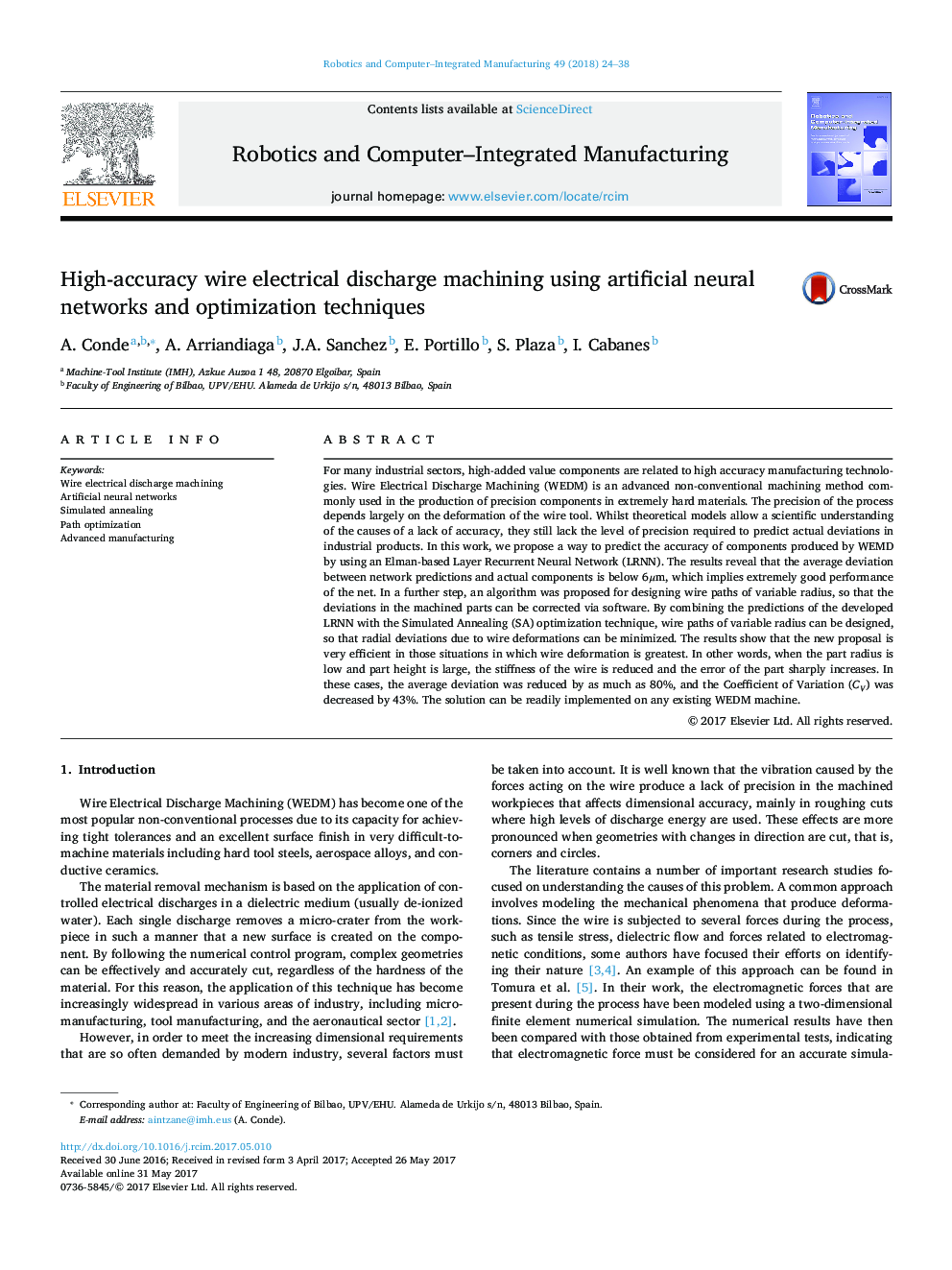| کد مقاله | کد نشریه | سال انتشار | مقاله انگلیسی | نسخه تمام متن |
|---|---|---|---|---|
| 4948928 | 1439928 | 2018 | 15 صفحه PDF | دانلود رایگان |
- An original approach based on artificial intelligence (AI) techniques that can be easily implemented in industrial machines has been proposed for increasing the accuracy of the WEDM technology.
- A new Artificial Neural Network (ANN) configuration has been used to predict accuracy in WEDM.
- Training of the network has been carried out using information extracted from industrial WEDM cuts.
- By combining the predictions of the ANN with the Simulated Annealing (SA) optimization technique, wire paths of variable radius can be designed, increasing process accuracy.
For many industrial sectors, high-added value components are related to high accuracy manufacturing technologies. Wire Electrical Discharge Machining (WEDM) is an advanced non-conventional machining method commonly used in the production of precision components in extremely hard materials. The precision of the process depends largely on the deformation of the wire tool. Whilst theoretical models allow a scientific understanding of the causes of a lack of accuracy, they still lack the level of precision required to predict actual deviations in industrial products. In this work, we propose a way to predict the accuracy of components produced by WEMD by using an Elman-based Layer Recurrent Neural Network (LRNN). The results reveal that the average deviation between network predictions and actual components is below 6μm, which implies extremely good performance of the net. In a further step, an algorithm was proposed for designing wire paths of variable radius, so that the deviations in the machined parts can be corrected via software. By combining the predictions of the developed LRNN with the Simulated Annealing (SA) optimization technique, wire paths of variable radius can be designed, so that radial deviations due to wire deformations can be minimized. The results show that the new proposal is very efficient in those situations in which wire deformation is greatest. In other words, when the part radius is low and part height is large, the stiffness of the wire is reduced and the error of the part sharply increases. In these cases, the average deviation was reduced by as much as 80%, and the Coefficient of Variation (CV) was decreased by 43%. The solution can be readily implemented on any existing WEDM machine.
Journal: Robotics and Computer-Integrated Manufacturing - Volume 49, February 2018, Pages 24-38
